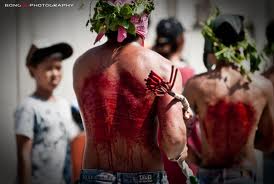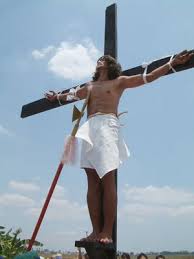The Holy Week in the Philippines is celebrated every year from the deeply rooted Roman Catholic traditions, which can be traced from its religious roots way back in the 1500s when Spain colonized the country.
A predominantly Roman Catholic nation, Holy Week or also known locally as Semana Santa is one of the most important religious festivities of the year. The Lenten season begins during Ash Wednesday when people go to Church and the priest put ash on their foreheads during the mass.
It culminates during Good Friday wherein it reminds locals of the crucifixion and death of Jesus Christ. The Easter Sunday marks the end of the Holy Week in celebration of the rising of Jesus Christ to heaven.
Here are some more Philippine Holy Week traditions:
Palm Sunday
Palm fronds or locally known as Palaspas are brought to the Church for the priest to bless during mass. Filipinos wave them in the air while waiting for the priest to bless them with holy water before or after the mass. These are placed in their houses either on the doors, windows or living area and are believed to ward off evil spirits.
Senakulo
Fasting and abstinence
Pabasa
The Pabasa is a tradition of elder Filipinos wherein they sing or chant the words from the Pasyon, which is a story book about the life, passion, death and resurrection of Christ. There are two groups that are divided who sing or chant the lines or stanzas alternately with a string instrument like a guitar usually for three days.
Washing of the Feet
In the olden days, the host provide water for travelers to wash their feet upon entering the house which is a sign of humility and a service to other people by Jesus during the last supper. It’s commemorated during Holy Thursday mass when the priests wash the feet of 12 churchgoers who represents the 12 apostles in the bible.

Visita Iglesia
The tradition is to visit seven or 14 churches during Holy Thursday or Good Friday wherein Filipinos pray on their own or with their family and recite the Stations of the Cross. There are a lot of famous churches in Manila and in the provinces of Philippines which can be visited. (You may visit the Visita Iglesia post).
Salubong
It reenacts the first meeting of Jesus Christ and Mary after His resurrection which happens on Easter Sunday. The Statues of Jesus Christ and Mary are carried the opposite ends of the community wherein the statue of Mary is covered in a black veil of mourning called lambong.
Photos from different websites
For more info about Catholicism in the Philippines, you may visit Catholic Bishops’ Conference of the Philippines (CBCP) website.

















I saw some of these traditions during Holy Week celebration last week and I’m interested in witnessing more of it next year. Good post!